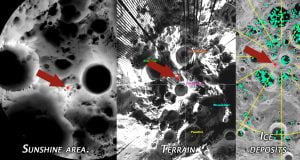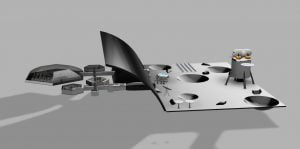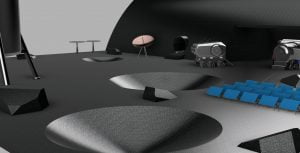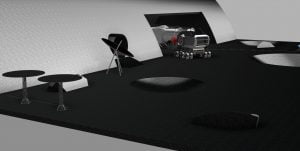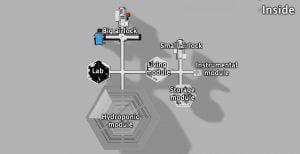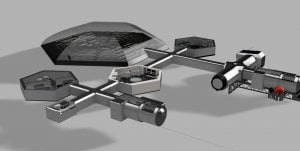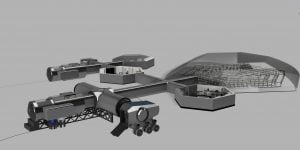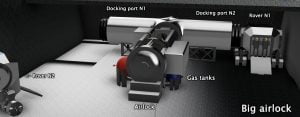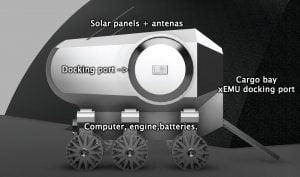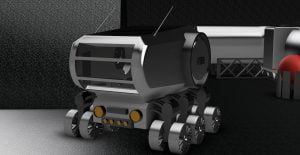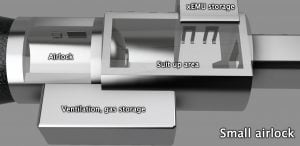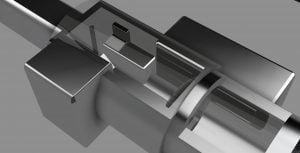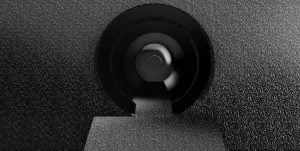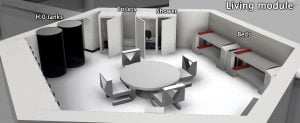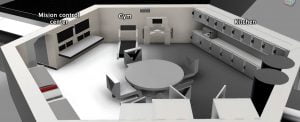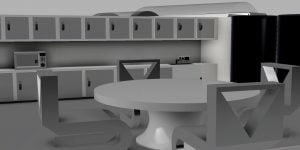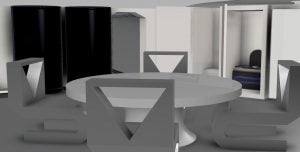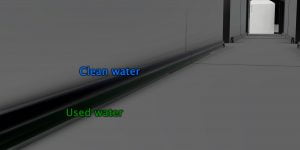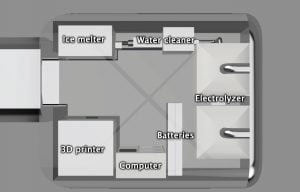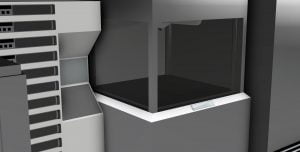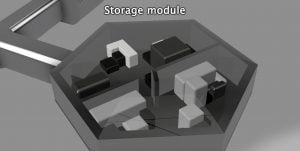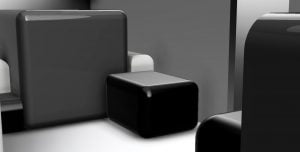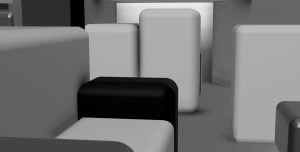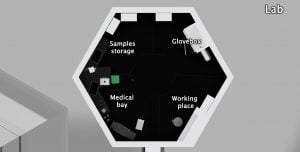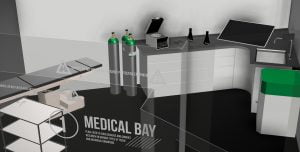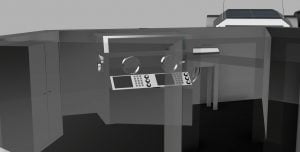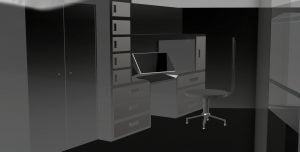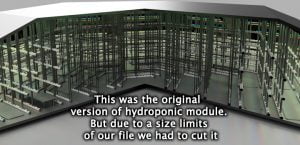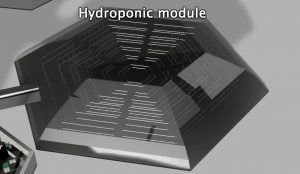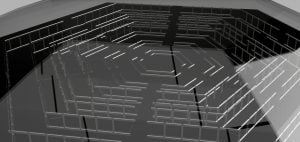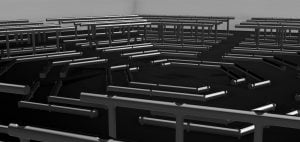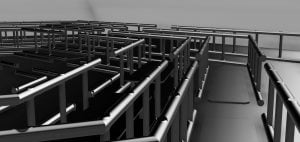Moon Camp Pioneers Winners
Team: SOSA Team
Bilíkova 24/Bachova 4/ŠpMNDaG – Skalická 1 Bratislava Slovakia 17 to 18 years old Second Place – Non-ESA Member States
External viewer for 3d project
|
Project description
[42] |
|||
|
Describe your Moon Camp project.
In our project we attempted to design everything as detailed as possible. Our base includes the following modules: Living Module, Storage Module, Instrumental Module, Laboratory, Hydroponic module, connected by hallways. We designed two airlocks; large and small. The large one features a docking port for 2 rovers. We have 388,4 m3 of pressurized area. Our base also features integrated storage tanks: O2 tank = 0.74 m3 (T < −182.962 °C) N2 tank = 1.5 m3 (T < -195.8 °C) CO2 tank = 0.52 m3 (T < -78.46 °C) H2 tank = 2.82 m3 (T 0°C). Where do you want to build your Moon Camp?
The base will be located on the south pole of the Moon. As you can see in the image below, we have three strategic points, which are all located beneath the Sun for maximum solar power output, on good terrain and featured by large ice deposits. The base itself will be located amongst three of the Moon’s remarkable craters: Shackleton, de Gerlache, Sverdrup. That way, if one crater lacks the ice, the other craters are still available. How do you plan to build your Moon Camp? Describe the techniques and materials you would use.
We will use commercial cargo missions to send unmanned probes to the moon, with all materials and resources needed for setting up the base. These probes will dig up caves where we will place our modules. After the astronauts’ arrival, the basics will already be prepared. We will use self-inflated modules, similar to those used on the ISS (BEAM), made from kevlar-like materials or carbon fibers. After inflating the modules, the astronauts are going to place an aluminum foundation so that the modules can be set up. Astronauts will then start bringing in parts of the systems, such as computers, water tanks, pipes, wires, etc. Some big parts, such as the kitchen or the 3D printer will be modular due to the fact that they can’t be fitted through the hallways. After this, the base will be fully operational. |
|||
|
Water
|
Food
|
Electricity
|
Air
|
|
To provide some water for astronauts at the start of the programme, we will use commercial cargo missions. We will need water for 3 things: Hydroponic module, human needs, and electrolysis. To provide water for a lengthy missions, we shall use the Moon’s ice. After melting the ice and filtering the water via a small particle filter, we will be able to use this water for our needs. Also we will filtraite human liquid waste. |
To provide food for the astronauts, after consulting nutrition experts, we have created a hydroponics module with the ability to provide all needed nutrients for all of the crew. Features of the module include hydraulic panels for easy access to the plants, light providing the specific needed wavelengths, active water circulation system, carefully engineered air circulation, and optimal simulation-tested shape to withstand any pressure differences due to the large amount of lunar soil weighing down on the module. |
Electricity will be provided by two reactors of 10 kW each, as well as solar panels with an area of 76.8 m2, which produce more than 18 kW worth of harvested solar energy. This energy will be stored in batteries, each capable of containing 28 kW. |
To keep the environment safe for humans, we will have a computer which will monitor pressure, CO2, humidity and O2 levels. For long term missions, we will use the water from Moon’s ice to provide the needed oxygen via water electrolysis (Electrolyzer is inside the Instrumental module). The plants will provide a small, but usable amount of oxygen through their photosynthesis, as well. |
|
How do you plan to build your Moon Camp? Which materials would you use?
[54] |
|||
|
The environment on the Moon is very dangerous for the astronauts. Explain how your Moon Camp will protect them.
There are several factors affecting astronauts’ safety, all of which we addressed: |
|||
|
Describe a day on the Moon for your Moon Camp astronaut crew.
An average day of our crew shall start in the living module, which provides all the utilities for their morning routine. The day’s schedule will be sent from the Earth, presented at a morning meeting. After going through the system checkup, astronauts will prepare for their EVA. The new xEMU will provide the astronauts the ability to do EVAs daily with ease. On these EVAs, astronauts will mostly perform outside equipment checkups every couple of days. Although our electronic system monitors every anomaly, for optimal safety, it’s at the crew’s best interest to do real check ups regularly. After this, astronauts will start working on their studies on the moon. Long range expeditions will be performed on space rovers, where designated crew members will collect various samples of Lunar surface objects, though the crew’s main objective regarding EVAs will be to collect ice from previously selected lunar ice deposits. These ice samples will be further used for scientific research and provide the means for ISRU. Two groups will be sent to two different craters with ice deposits. Each group is going to be ordered to head back to the base as soon as it collects at least 200kg worth of ice. Rocks collected on the expeditions will be later studied at the base laboratories. The entire crew will consist of four astronauts. Each astronaut will have a designated profession in the crew, and will have a set of specific tasks to perform: |
|||


